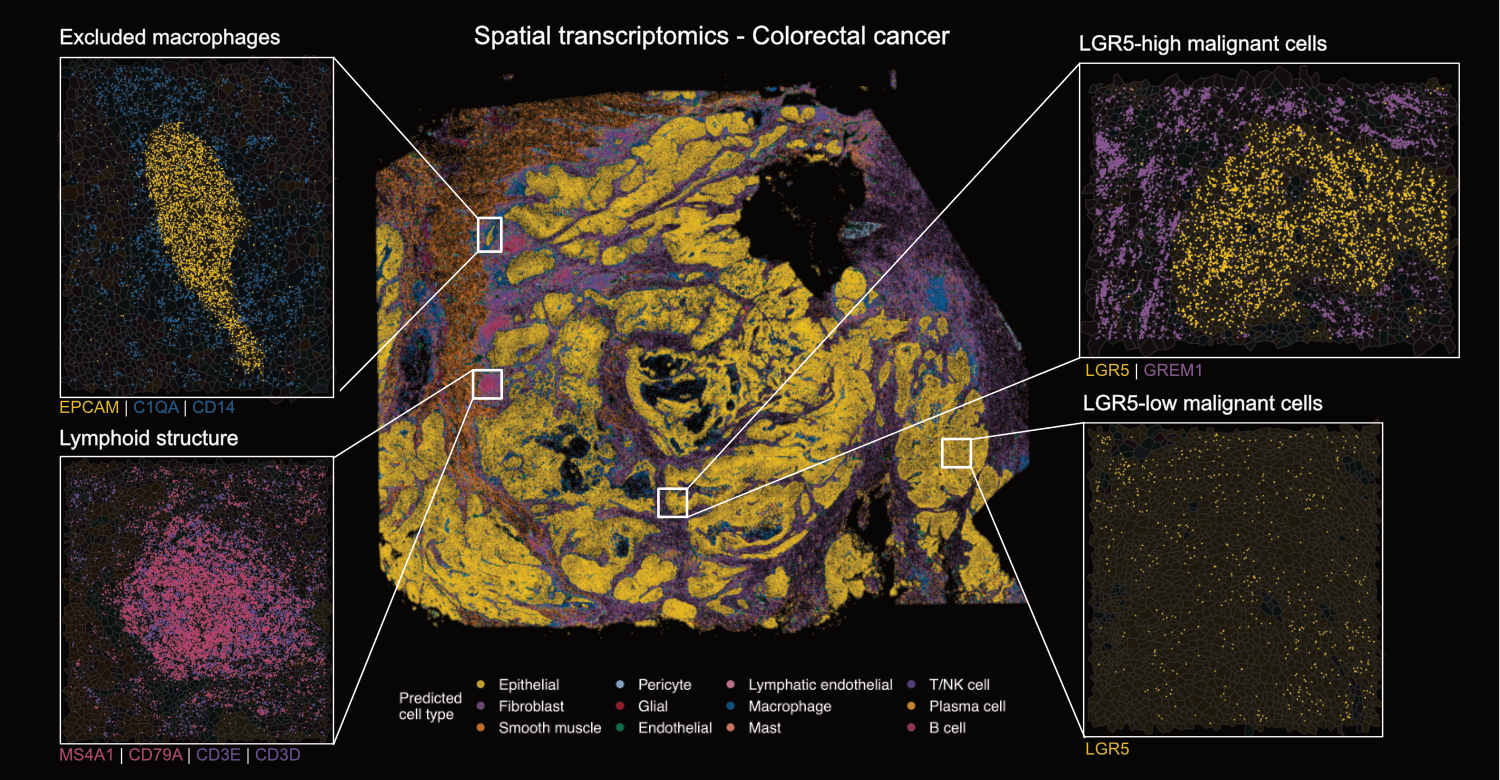Our research combines experimental and computational approaches to understanding how ovarian tumours evolve to resist treatments, evade immune detection, and metastasize. Outcomes from patients with ovarian cancer have not improved in decades and treatment options remain limited. We hope to better understand these cancers and develop new strategies to effectively manage them.
We are currently focusing on several related directions:
Charting cellular ecosystems throughout the tumour microenvironment
Tumours comprise diverse cell types whose interactions ultimately shape disease progression. Beyond malignant cells, this includes an array of immune and structural populations. But their organization throughout the tumour is not uniform. Just as dense cities and rural landscapes develop over time, regional ecosystems emerge throughout the tumour microenvironment as it grows.
We use cutting-edge techniques to survey the landscape of the tumour microenvironment, creating a census of cellular populations and their organization throughout the tissue.

We are building these maps for multiple subtypes of ovarian cancer and aim to understand how the diversity of cell types, their interactions throughout the tumour, and how they influence disease progression and treatment response.

Tracking cellular adaptation and acquired resistance in ovarian cancer
While ovarian tumours often respond to initial treatments, many recur and become resistant to therapy. Historically, this has been viewed as a process of selecting for rare cells that had acquired mutations that provide protection against the treatment. However, increasing evidence suggests that this may not be the dominant mechanism of resistance.
Cancer cells are not static. Their traits are malleable and influenced by their local environment. As such, throughout the landscape of the tumour, diverse malignant cells populations exist—a phenomenon described as “intratumoural heterogeneity”. The properties of these cells affect their sensitivity to all forms of treatment, including chemotherapy, targeted therapies, and immunotherapies. Furthermore, this malleability allows cells to adapt to changes in their environment. We are particularly interested in understanding how cancer cells evolve following their exposure to treatment.
Is therapy resistance a property that only emerges after treatment onset? Can we predict resistance from the properties of cells prior to treatment? Importantly, can we develop approaches to restrict the malleability of these cells?
To study this, we use experimental model systems derived from patient tumours and simulate treatment regimens in the lab. We’ve developed techniques to make millions of measurements to profile the diversity of cancer cells and track how they change throughout the course of treatment.
Developing novel therapeutic strategies for ovarian cancer
Therapeutic approaches for ovarian cancer have often focused on the use of cytotoxic compounds that preferentially kill rapidly dividing cells. These treatments also affect various healthy tissues and are often ineffective at completely clearing cancer cells.
We develop new therapeutic strategies that aim to reshape the cellular landscape throughout the tumour microenvironment and counter adaptive mechanisms used by cancer cells to evade immune detection and resist therapies. In close collaboration with chemists and immunologists, we focus on an array of treatment approaches, from novel compounds, to biologics, and engineered cell therapies.
